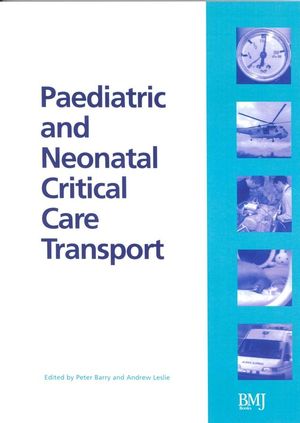Paediatric and Neonatal Critical Care TransportISBN: 978-0-7279-1770-6
Paperback
160 pages
April 2003, BMJ Books
 This is a Print-on-Demand title. It will be printed specifically to fill your order. Please allow an additional 10-15 days delivery time. The book is not returnable.
|
||||||
Sick babies and children are moved between hospitals for many
reasons, often to receive specialist care and treatment not
available locally. For the transfer to be safe and effective it is
necessary to plan carefully for these occasions, and for the
doctors and nurses attending the transport to be able to provide
intensive care on the move.
The book provides guidance in both of these major areas. The first section - 'Planning for Safe and Effective Transport' - details issues to be considered by senior staff in setting-up or modernising a transport programme. General principles and relevant physiology are outlined, and vehicles and equipment are discussed in depth. The second section - 'Practical Transport Management' - is concerned with different patient groups and key clinical issues. These include the distinctive features of neonatal and paediatric patients, and management of airway, breathing and circulation. Other chapters discuss airborne transport, pharmacology, trauma, and special interventions for transport such as extracorporeal membrane oxygenation and inhaled nitric oxide.
The book provides guidance in both of these major areas. The first section - 'Planning for Safe and Effective Transport' - details issues to be considered by senior staff in setting-up or modernising a transport programme. General principles and relevant physiology are outlined, and vehicles and equipment are discussed in depth. The second section - 'Practical Transport Management' - is concerned with different patient groups and key clinical issues. These include the distinctive features of neonatal and paediatric patients, and management of airway, breathing and circulation. Other chapters discuss airborne transport, pharmacology, trauma, and special interventions for transport such as extracorporeal membrane oxygenation and inhaled nitric oxide.



